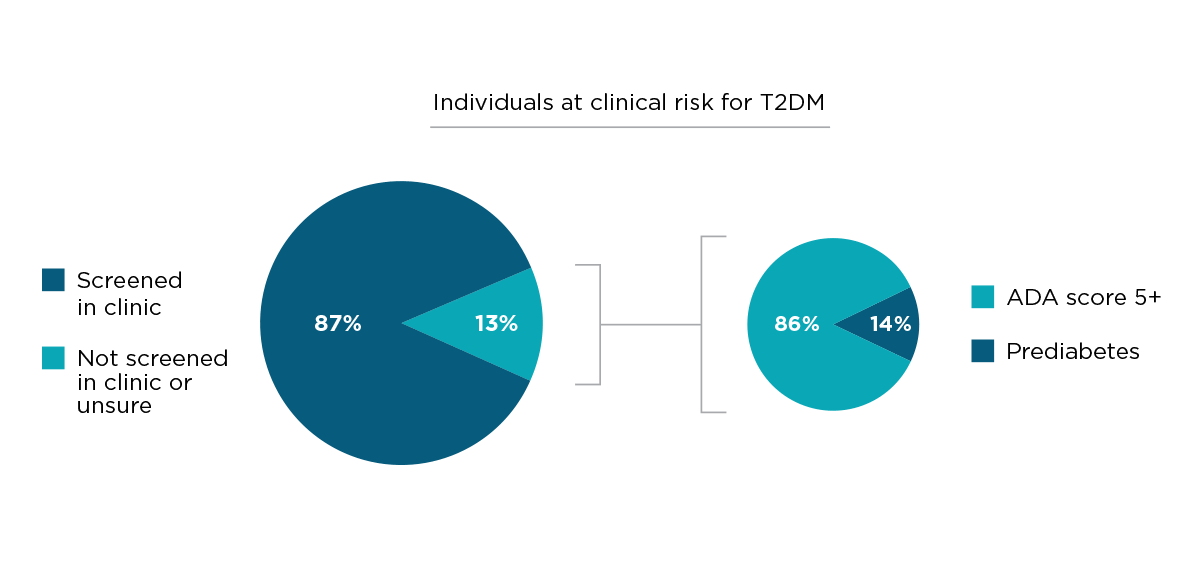News & Articles
Patients At Risk for Diabetes Miss Crucial Screenings In Clinic: New Color Analysis
Color

Traditional diabetes screenings in clinic are failing to identify a significant number of patients at risk for developing the disease, according to a data analysis conducted by population health company Color.
Color’s analysis of their user health surveys — standard for anyone who has taken a Color — found that 13% of patients currently at risk for diabetes who had a routine check-up in the last three years had not been screened in clinic for the condition. Color discovered this significant gap in screening for this high-risk population through its population health management platform and clinical integrations with health systems around the country.
All Color users fill out an online health questionnaire that includes the standard questions recommended by the American Diabetes Association (ADA) to calculate diabetes risk. The questions include topics such as family history, blood pressure, ethnicity and health behaviors to assess their risk of developing diabetes.
For its analysis, Color followed up with patients who had been diagnosed with prediabetes or were at risk for diabetes according to ADA criteria and asked whether they had been screened for the disease in clinic. They discovered that 13% of at-risk patients, though they had seen their doctors, had not been screened.
“These patients represent a population that is falling through the cracks of the healthcare system,” said Color CEO Othman Laraki. “They are being proactive about their health by seeing their doctors, but still, their symptoms are overlooked. As an industry, we need to rethink how we identify patients at risk for treatable diseases so we can ensure they receive the tools and resources to prevent them.”
Participants of Color’s survey who identified as high-risk for type 2 diabetes received information about local screening resources through Color’s platform. The users also received genetic counseling as a standard part of Color’s test.
“Our survey found people at risk of developing type 2 diabetes and who could significantly improve their health by receiving the right intervention,” said Color VP of Research & Scientific Affairs Alicia Zhou, PhD. “For these people, every day of delay in appropriate screening can change the trajectory of treatment or prevention for a costly and potentially deadly chronic disease.”
Simply alerting patients that they have a risk of developing diabetes can help improve outcomes, according to previous research. Evidence suggests people who learn they are at risk for diabetes are more likely to participate in risk-reducing activities or programs, which can improve health. For example, people with prediabetes who participate in a structured lifestyle change program can decrease their risk of developing type 2 diabetes by 58%, according to the NIH.
“This research represents one of many ways that Color is transforming population health by incorporating genomics and a holistic approach to disease management into routine, preventive care,” Zhou said.
About Color
Color is the leader in delivering precision healthcare through cutting-edge technology. Color makes data-driven health programs such as clinical genetics accessible, convenient, and cost-effective for everyone. Color partners with leading health systems, premier employers, and national health initiatives around the world including the million-person All of Us program by the National Institutes of Health. For more information about Color, visit www.color.com



